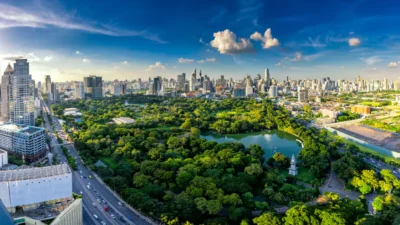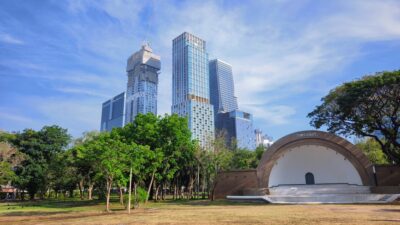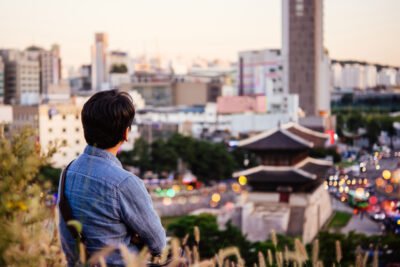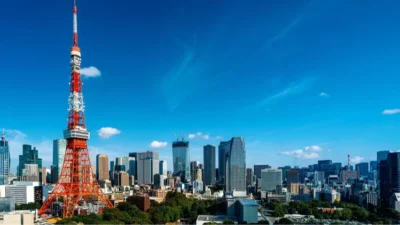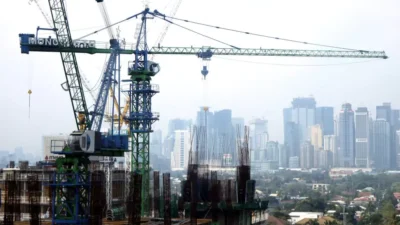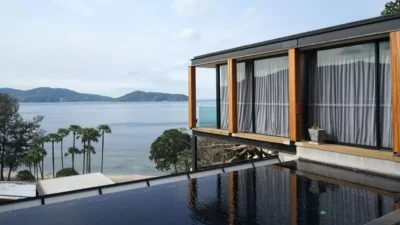Songdo: trailblazer or cautionary tale?
Heralded as the world’s first smart city, the master-planned South Korean metropolis is as disappointing as it is promising

This was supposed to be the future. Songdo, an instant city built on 600 hectares of reclaimed land along the Incheon waterfront near the South Korean capital Seoul, has ridden wave after wave of eco- and techno-utopian hype that started before its first brick was laid.
It was initially meant to be an “aerotropolis”, a futuristic international business hub tied to Incheon International Airport that would allow global access to one-third of the world’s population with 3.5 hours – a sort of purpose-built Hong Kong or Singapore to lure Western multinationals to set up shop.
It has also been billed as the world’s first smart city with the latest in connected technology to create an environment that is safer, greener, more convenient and more efficient.
But the reasons for its grandiose billing aren’t overly evident upon visiting. Songdo is exceedingly, well, nice. It’s pleasant. It’s clean. Not the deserted techno-dystopian misfit it’s been made out to be by some critics, but neither is it a city that seems plucked from the wildest realms of sci-fi.
Kids are getting out of school buses. Young mothers are pushing strollers and people are walking dogs along luxuriously wide pavements. Cyclists are utilising Songdo’s 25 kilometres of bike lanes and joggers move purposefully through Central Park, the 41-hectare centrepiece of the downtown Songdo International Business District (IBD).
Yet there is more going on than meets the eye. The brains of the city can be found in its massive networks of connected sensors that monitor everything from traffic accidents to pollution levels along with a Big Brother-like video surveillance system anchored in the U-Life Centre where a wall of screens streams real-time footage. Inside every home in the IBD, meanwhile, an automation system on a digital control panel allows residents to monitor their energy use.
Songdo was conceived in 2001 as a public-private partnership between New York-based Gale International, Korea-based POSCO E&C and Incheon Metropolitan City. Construction began in 2005, and it is now in a third phase of development. Some 45,000 people call the well-designed high-rise buildings of IBD home, while the greater metropolitan area has grown to more than about 130,000 residents.
The city even has its landmarks, including Incheon Bridge, Korea’s longest at 21 kilometres, which connects Songdo directly to the airport, and the 68-story Northeast Trade Tower, the second highest building in Korea.
And yet Songdo appears to have had many more misses than hits on the tech front, as it has cycled through numerous technology partners from LG to Microsoft, leaving behind a scrap heap of failed ideas. Cisco Systems, which provides much of the city’s networking infrastructure, was hoping to make it the showpiece for a consumer-facing version of its TelePresence video-conferencing system, envisioning a screen in every home that would connect residents to each other and a world of interactive learning and content. But that too didn’t move beyond an extremely limited implementation.
Part of the problem, says Greg Lindsay, a senior fellow of the New Cities Foundation, an international non-profit organisation focused on urban planning solutions and policies, comes from an overly top-down approach.
“These are corporations that are driving whatever vision they have at that moment,” said Lindsay. “It’s singular, it’s not broad enough, it’s not based enough in what people actually want. If you want to harness the capabilities of a smart city, you need a lot of bottom-up uptake and you need people to be able to design their own uses for things.”
THAT’S THE BIGGEST PROBLEM WITH THE WHOLE SMART CITIES PARADIGM: YOU CAN’T ALIGN THE CYCLE OF THE SLOW RATE OF CHANGE OF URBANISM WITH THE HYPER-ACCELERATED RATE OF CHANGE IN TECH
The problems of designing a smart city also are apparent in two very mismatched timeframes – while implementing things on a city-wide scale is a long-term process, technology is infinitely more nimble and fast-moving. For example, Cisco’s planned TelePresence rollout in Songdo was scuppered by the emergence of the smartphone – an innovation that instantly rendered TelePresence obsolete.
“That’s the biggest problem with the whole smart cities paradigm,” adds Lindsay. “You can’t align the cycle of the slow rate of change of urbanism with the hyper-accelerated rate of change in tech and so you end up getting misalignment constantly.”
Indeed, Songdo is far from the only smart city in the world to have experienced serious growing pains. Brasilia, the capital of Brazil, and Naypyidaw in Myanmar are among other “instant cities” criticised for their impersonality and overly planned feel.
Other ambitious plans are also facing strong pushback from housing and land rights groups. India’s Smart Cities mission, a plan to create 100 smart Indian cities by 2020, has faced intense criticism for focusing on flagship developments while failing to address basics such as provision of electricity and sanitation in poorer urban areas.
Another issue surrounding smart cities is what is being done with all the data collected. Concerns about privacy and surveillance remain a major concern, with visions of panopticons and predictive policing stoking 1984-style fears.
While there’s little doubt that big data, the Internet of Things and sensor technologies will continue to reshape the future of cities, many of the most successful implementations to date seem to be coming from an incremental and more human-scale approach.
If Songdo was Smart City 1.0, newer iterations seem to be learning and adapting from its hits and misses. The idea of greater data sharing and open APIs in a smart city environment is gaining traction – Australia’s Digital Transformation Office, for instance, positions itself as a “platform” for innovation, “to support flexible design of systems and, in many cases, public access and re-use,” according to its mission statement.
Many of the most successful smart city implementations have managed to find the right balance of innovation and practical application. Barcelona, for example, is widely lauded for its use of IoT to enhance everyday life from parking to traffic to energy efficiency in city lighting systems. At the same time, the city has used its focus on smart-city projects to foster its local technology industry. The city’s 22@Barcelona district sees startups putting public data to use in new applications and developing IoT technologies.
Back in Korea, few would argue that Songdo has been an overwhelming success. Nevertheless, residents are quick to point out the merits of the place. “I live here because of the beautiful park, and because it’s close to the sea,” says Kim Seung-ho, a designer who works in Seoul, which is 56 kilometres away.
Such testimony acts as a counterpoint to critics such as Chungha Cha, chairman and founder of the Seoul-based Re-Imagining Cities Foundation, who says: “I never considered Songdo to be a smart city or an eco-city. I think it’s a little bit of a marketing thing. As such, I don’t know why it’s getting so much publicity.”
But, if it’s not the futuristic sci-fi eco-efficient ideal that it was billed as, Songdo can still point to some pretty impressive stats on its achievements thus far.
One of its key features is a pneumatic waste disposal system with 55 kilometres of tubes that route trash to several collection points for recycling. The city also has more than 22 million square feet of LEED-certified space in 118 buildings, and was designed with 40 percent green space. Citywide water recycling is projected to reach 40 percent and waste recycling 76 percent by the year 2020.
Developers claim that overall energy use in Songdo IBD is up to 40 percent less per person than an average city thanks to smart technology and use of insulation and high-performance glass.
While it started with grand visions, Korea’s supposed smart city showpiece has emerged as something perhaps more modest than initially planned. The city of international globetrotters has instead become a quiet, well-designed community of families and young professionals.
Whether you see that as a failure, a surprising success or something in-between depends on how you chose to look at it.
“There are multiple overlapping levels and expectations,” concludes Lindsay. “It’s what you want to make of it.”
This article originally appeared in Issue No. 144 of PropertyGuru Property Report Magazine
Recommended
Why Asia’s mixed-use developments are the future of real estate
Dynamic integrated communities are fusing real estate with commercial, leisure, and other amenities
Transforming cities worldwide: Surbana Jurong’s vision for the future
Surbana Jurong excels in master planning, infrastructure, and urban development
Inside Asia’s commercial real estate: The cities thriving and those facing tough times
Shifting consumer preferences, and fluctuating economic policies mean commercial real estate investors in Asia must remain agile
Why young Asians are choosing singlehood and reshaping real estate trends
Marriage is out, and singlehood is in as young Asians subvert convention to explore alternative paths in real estate



